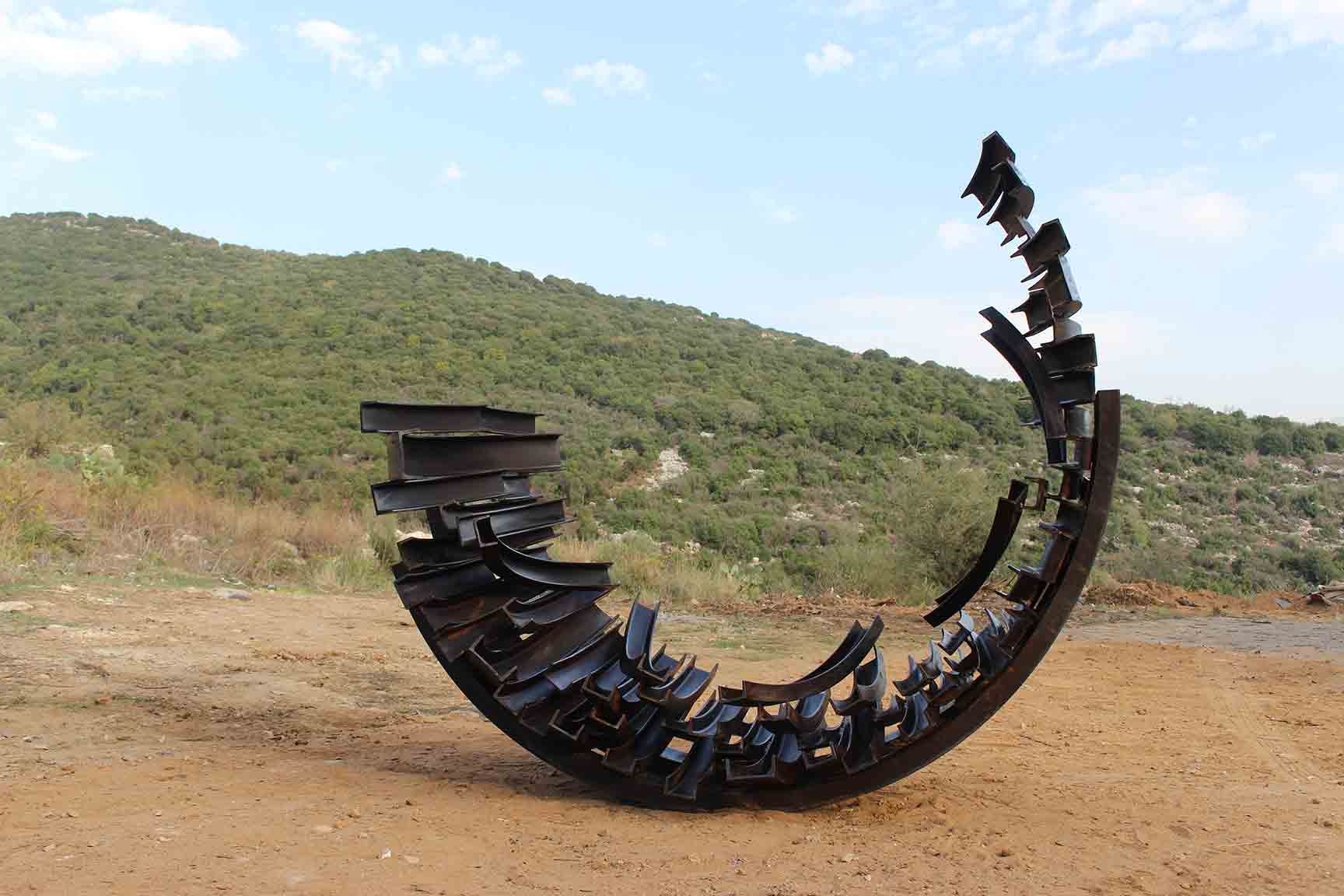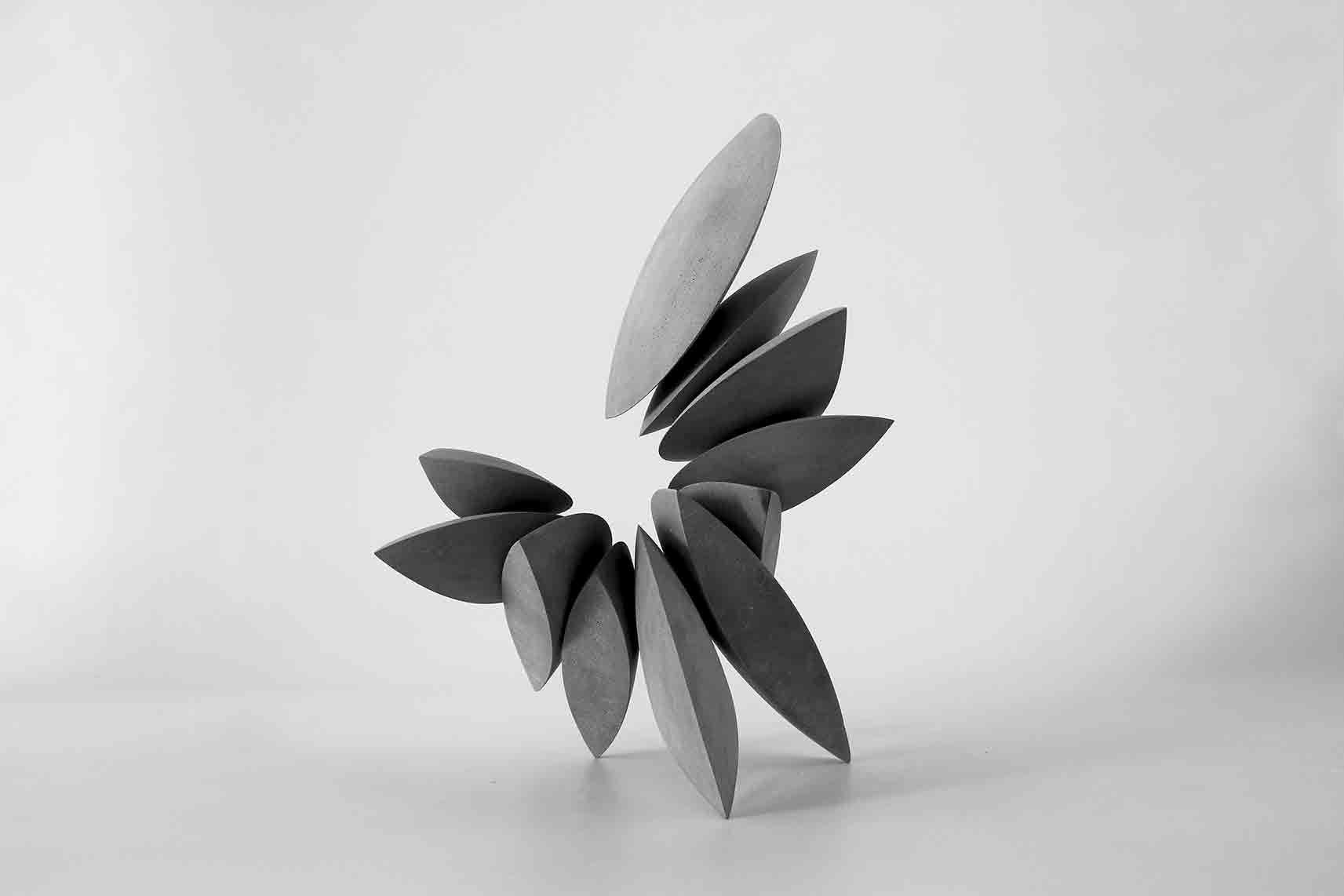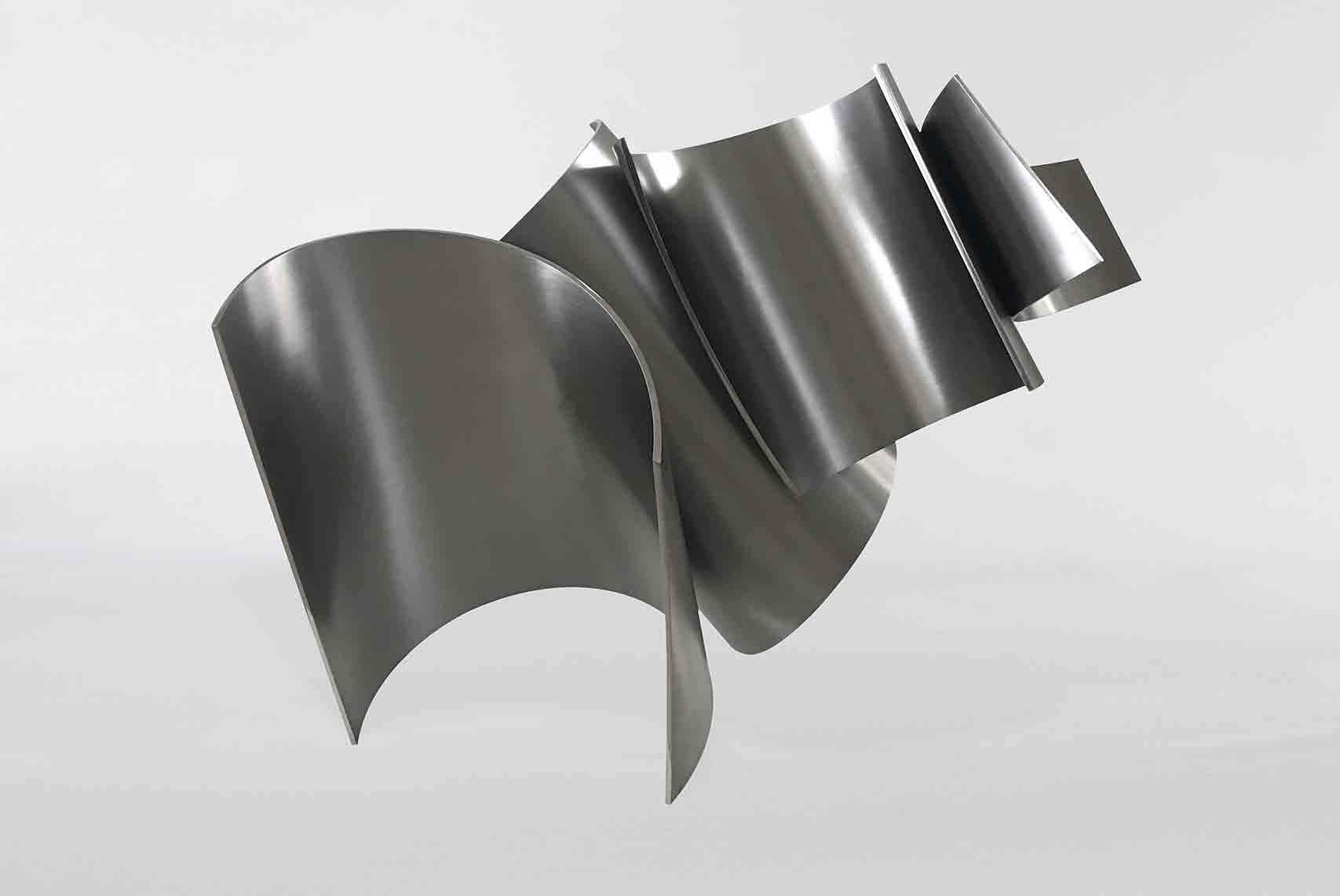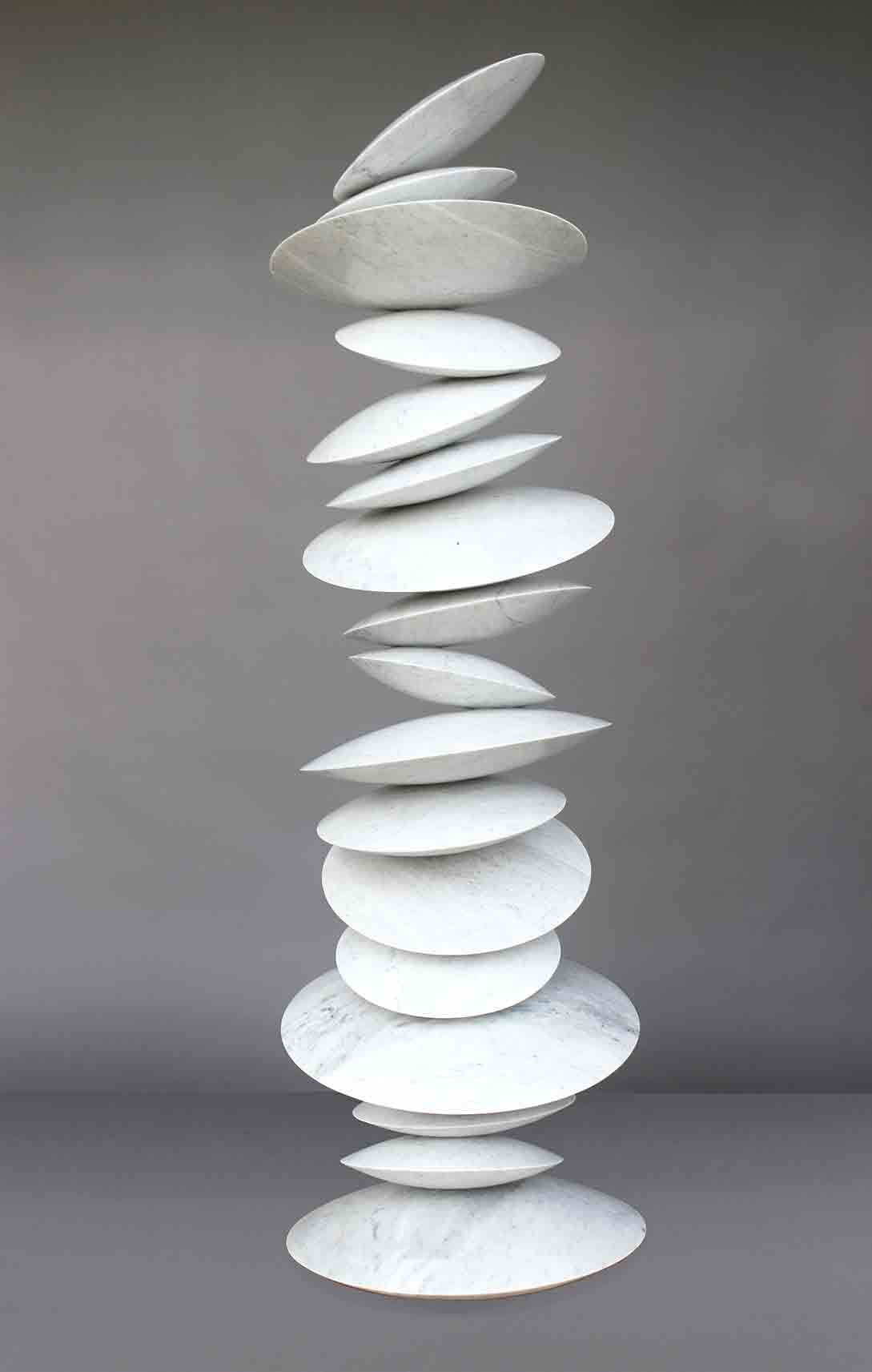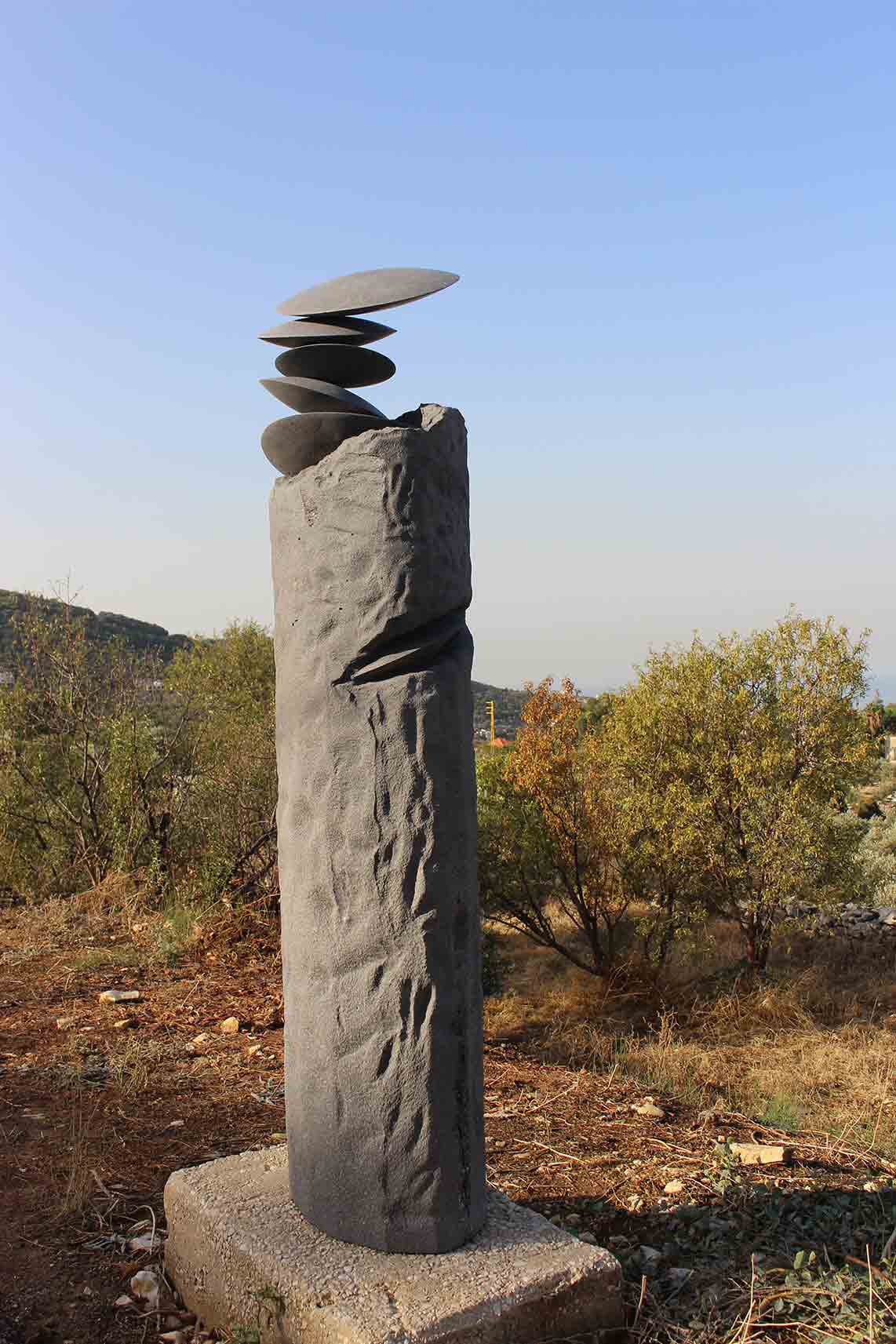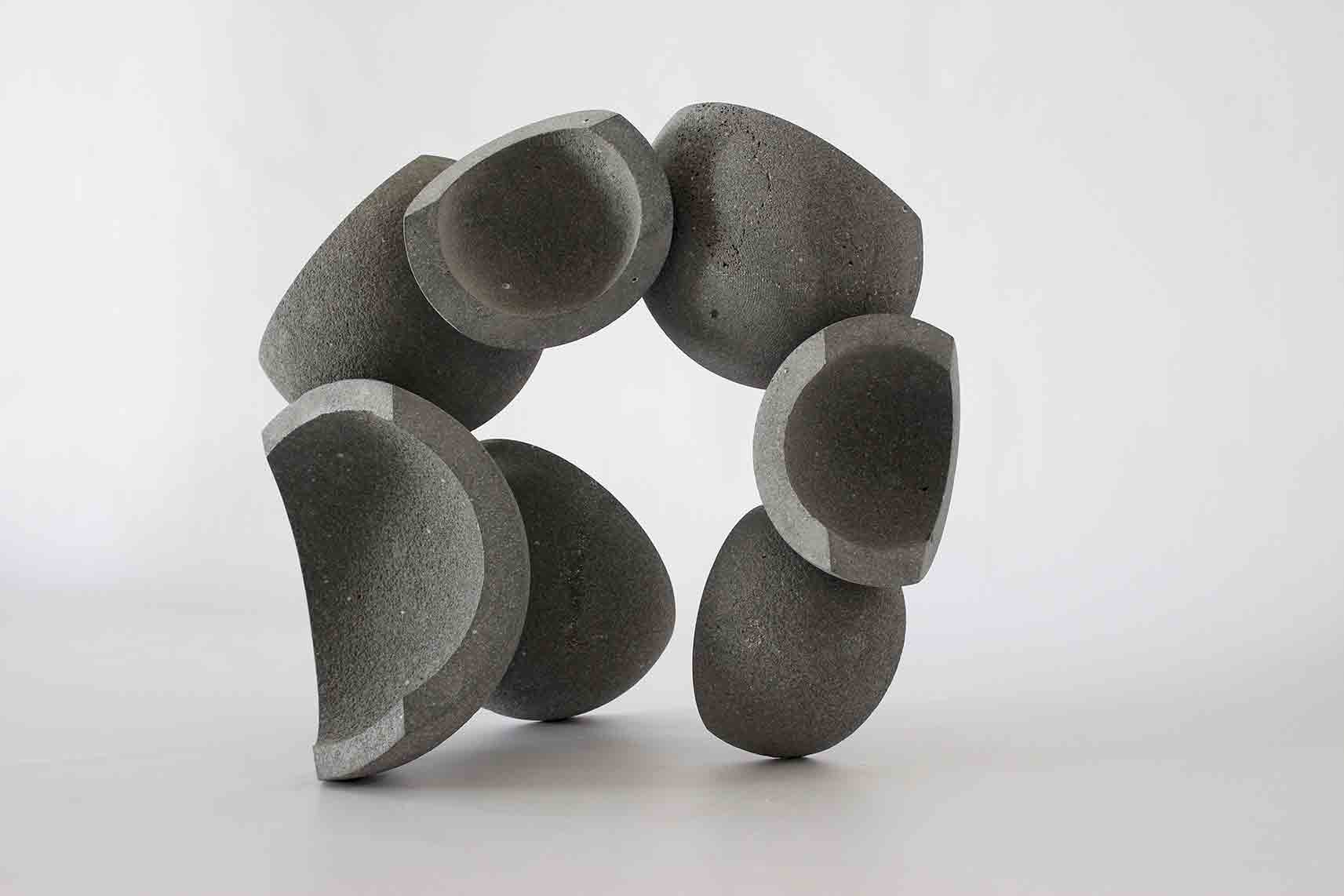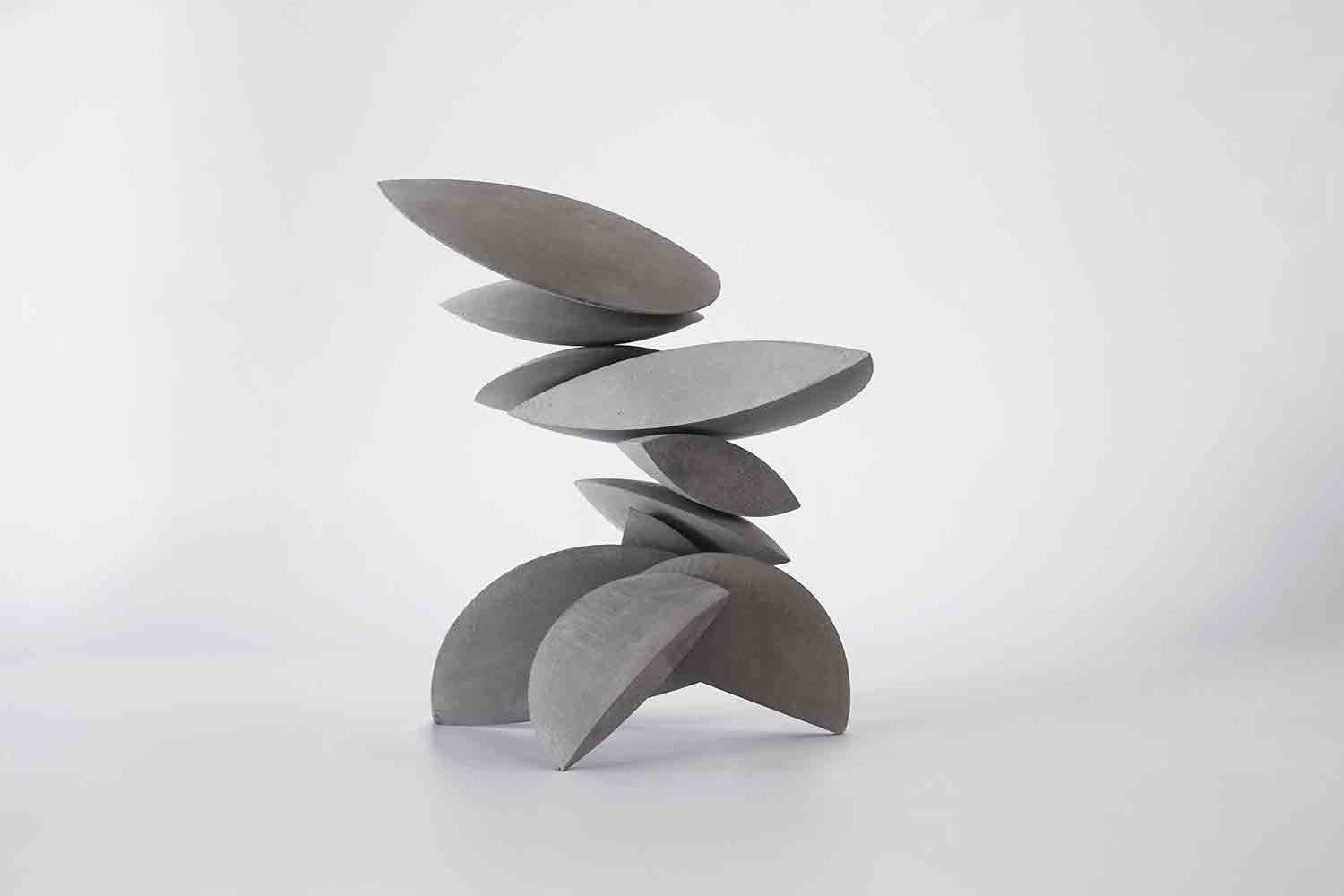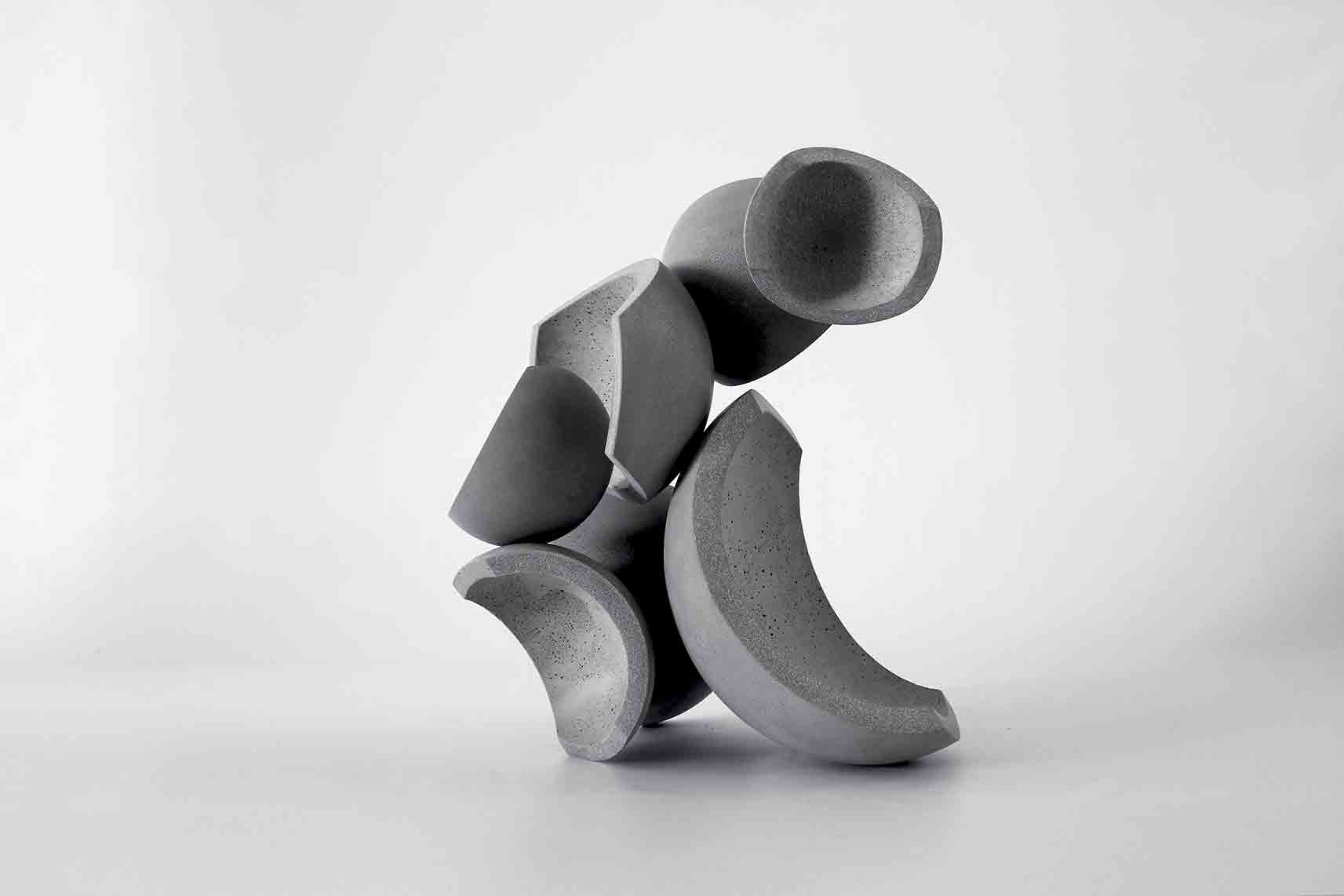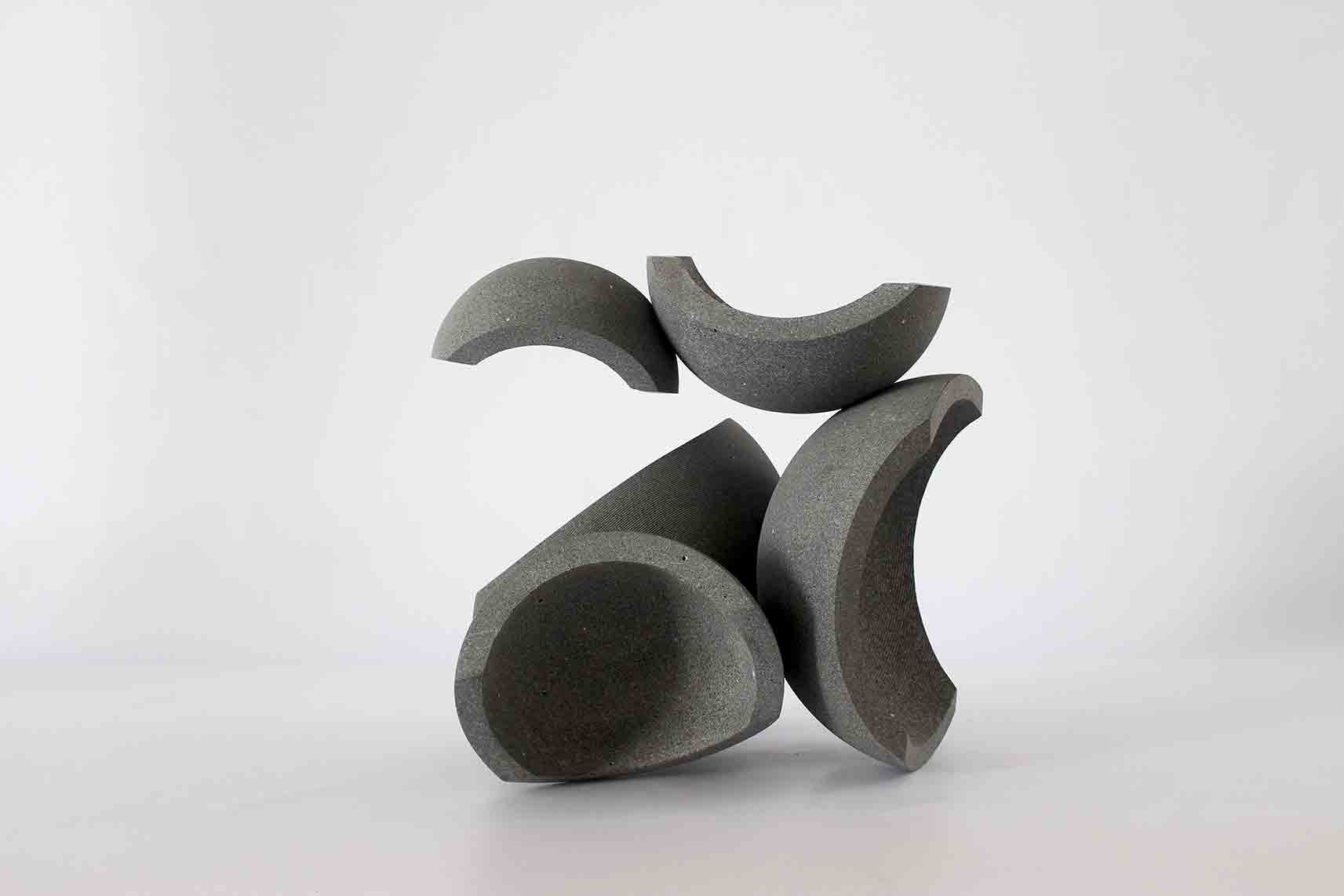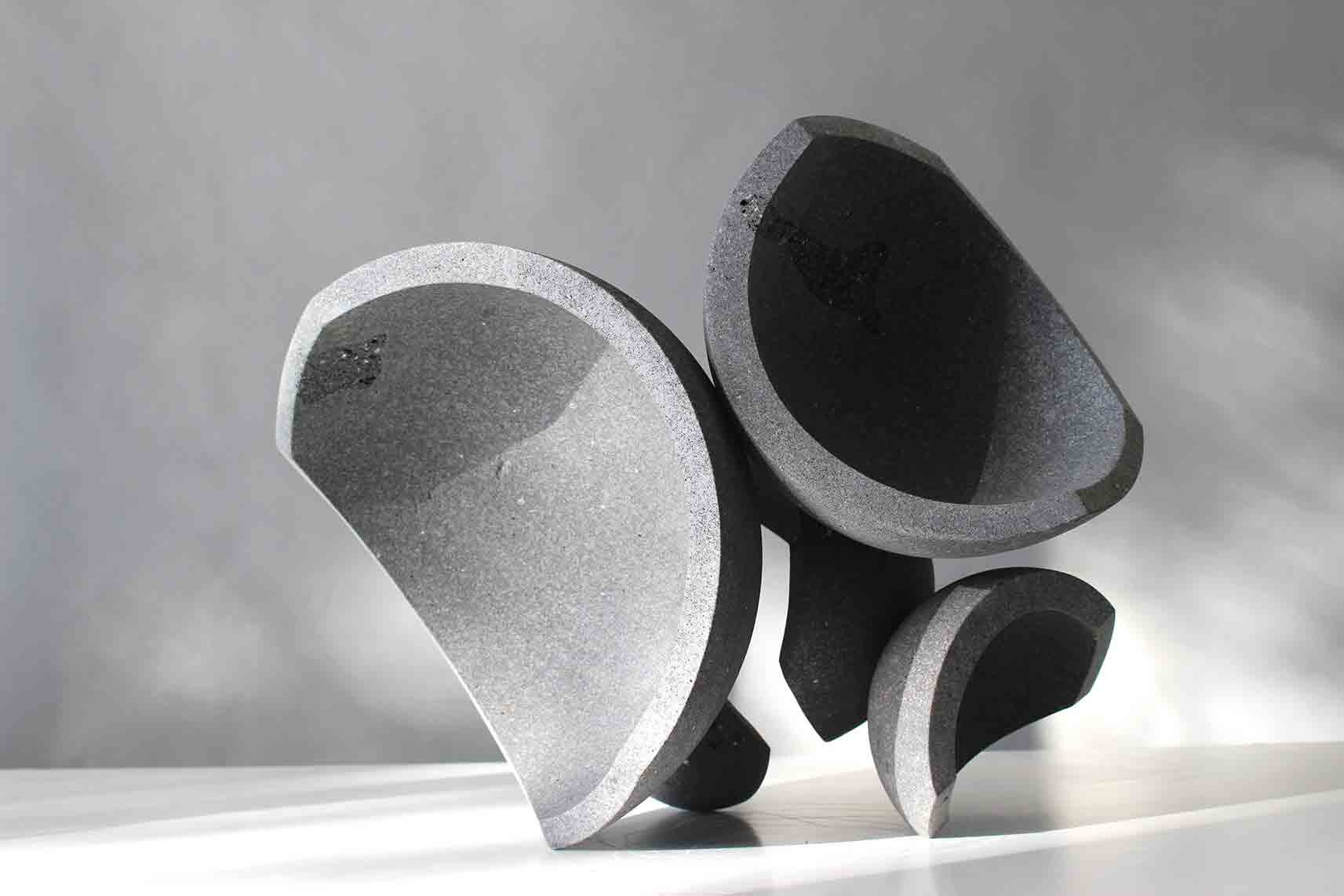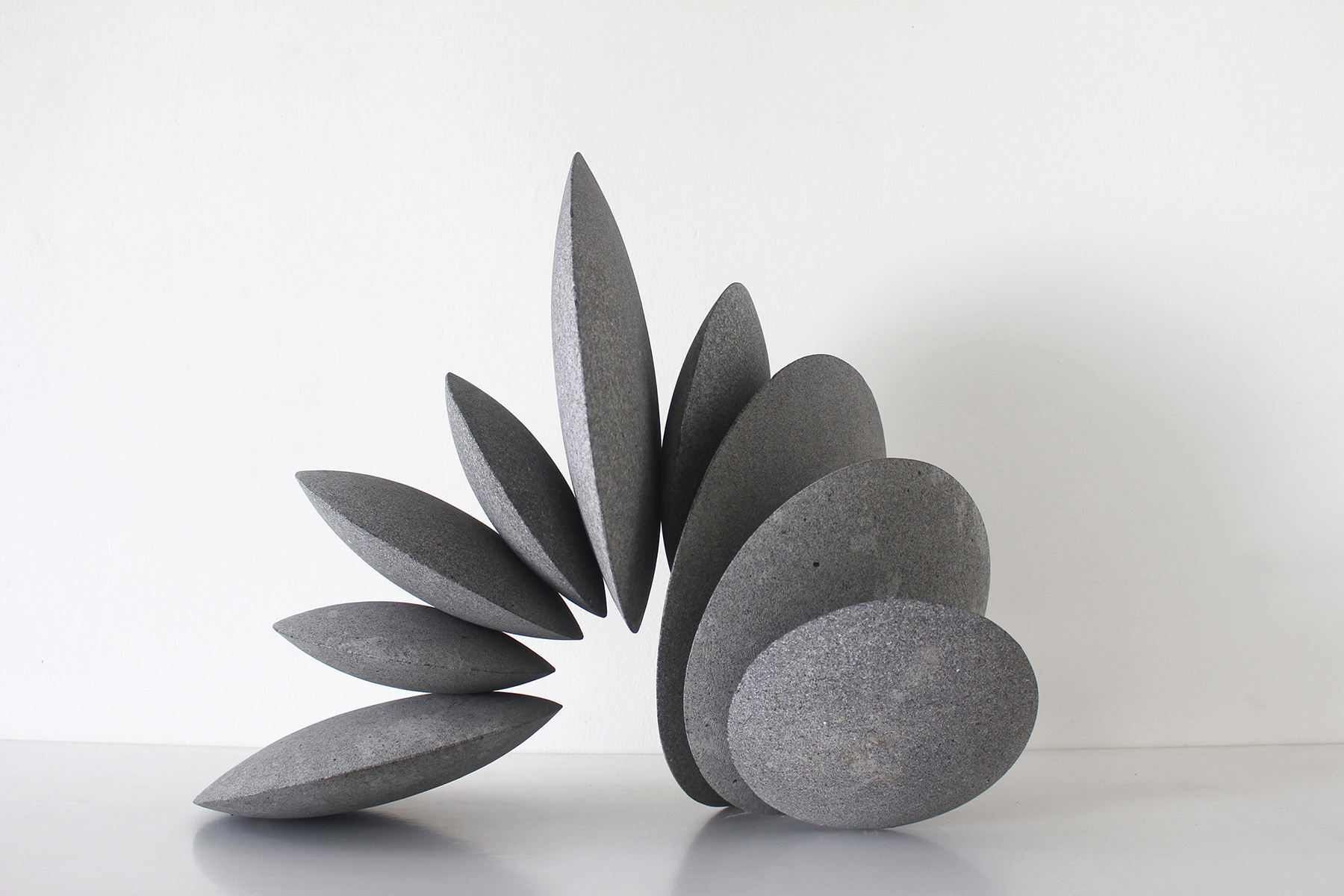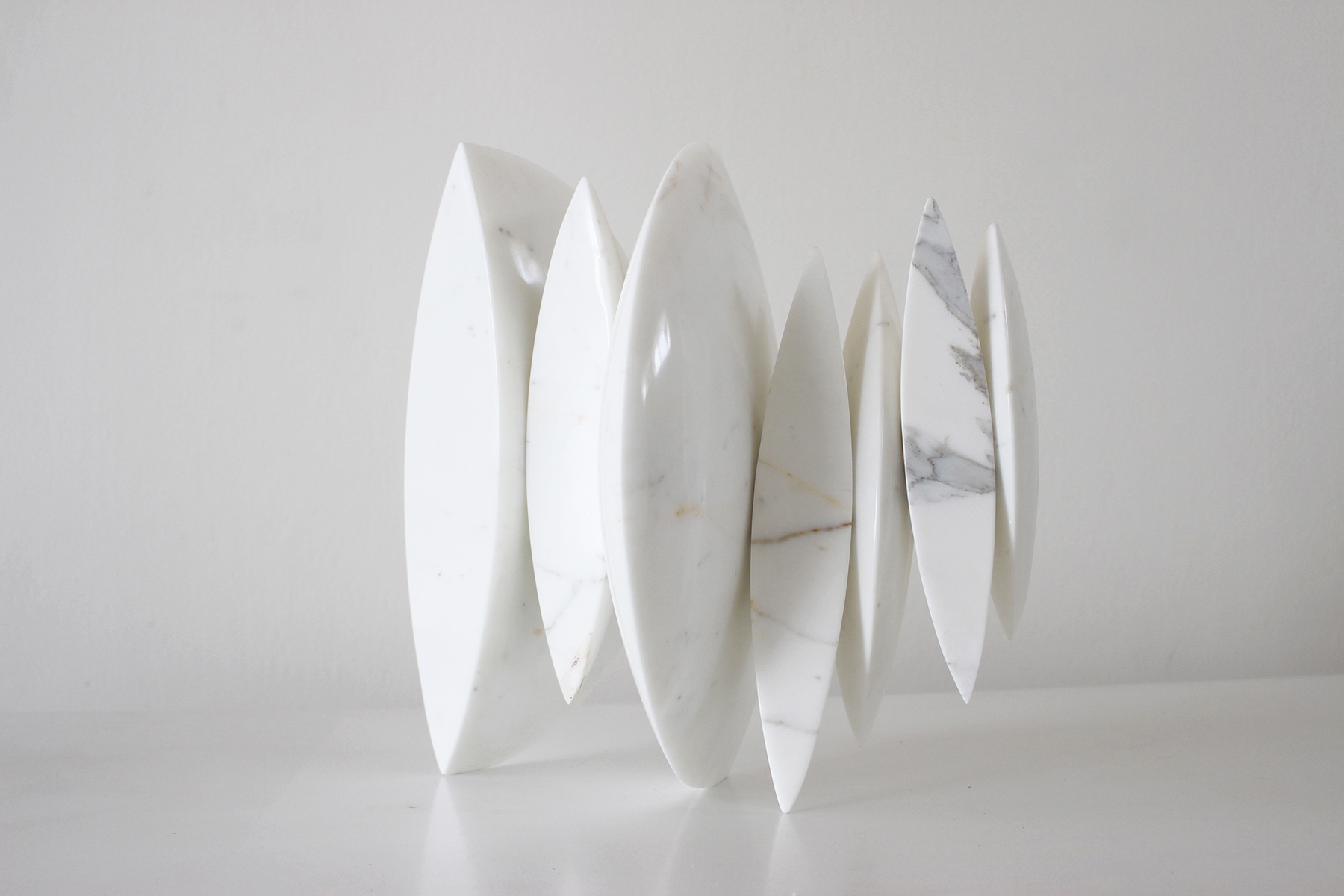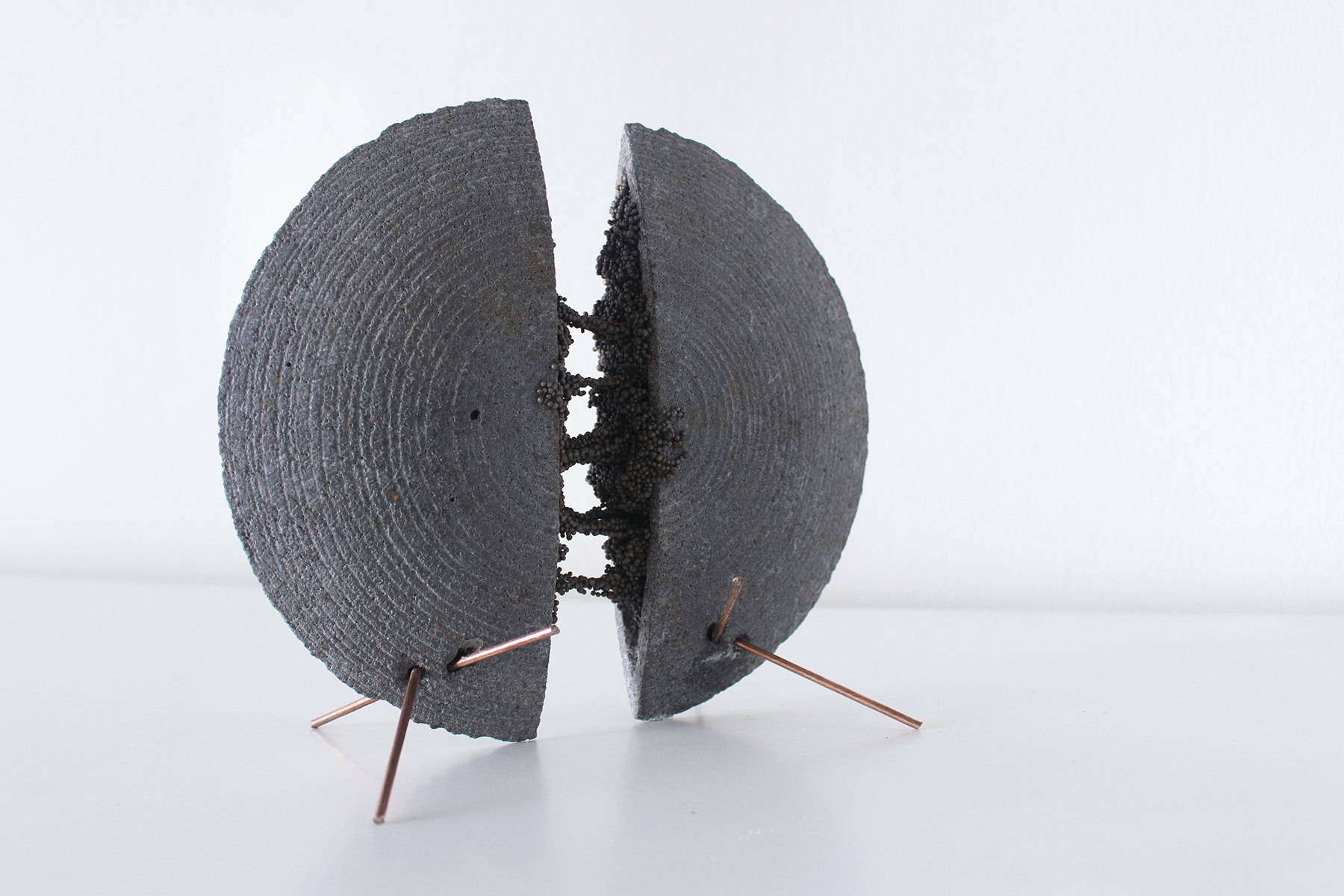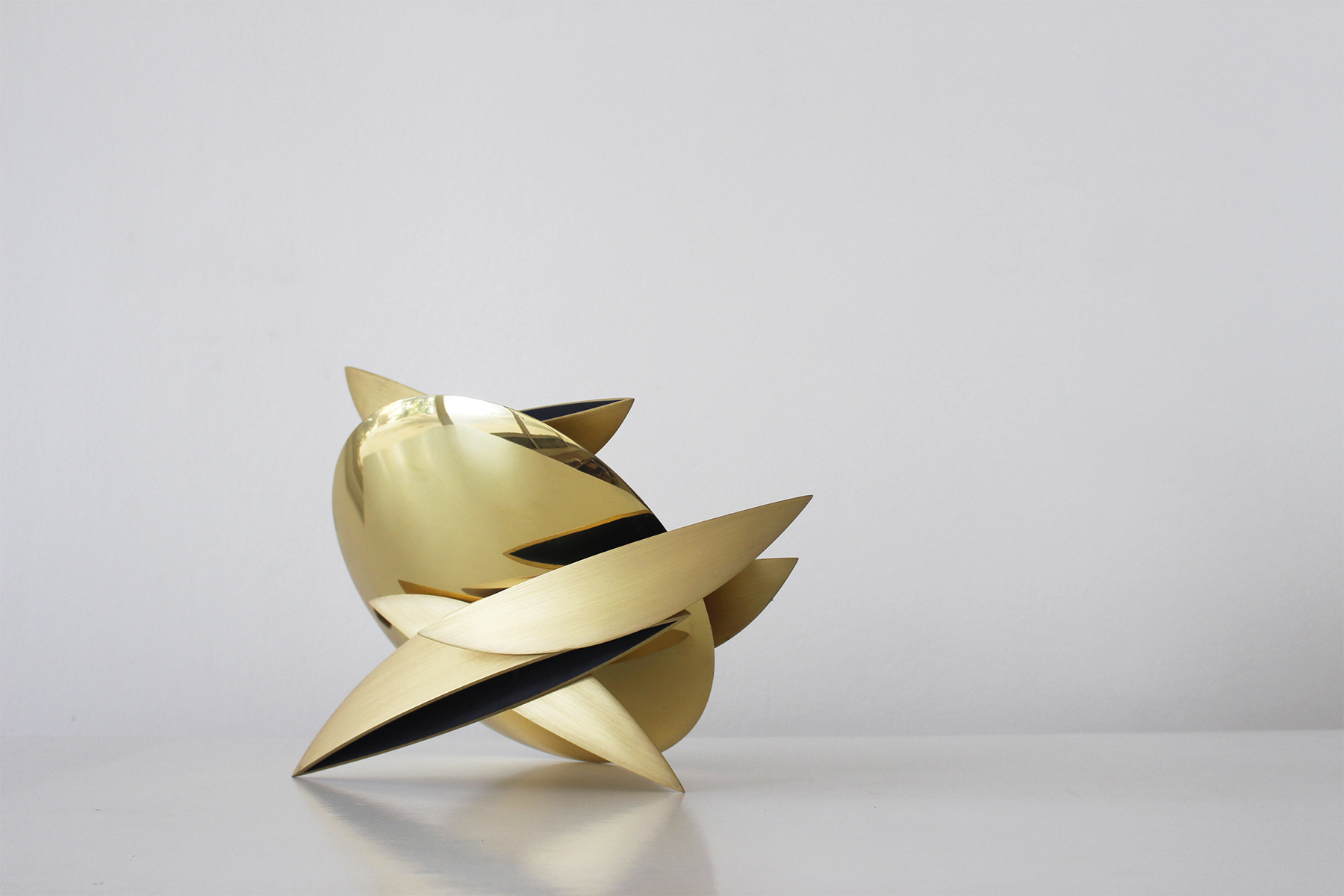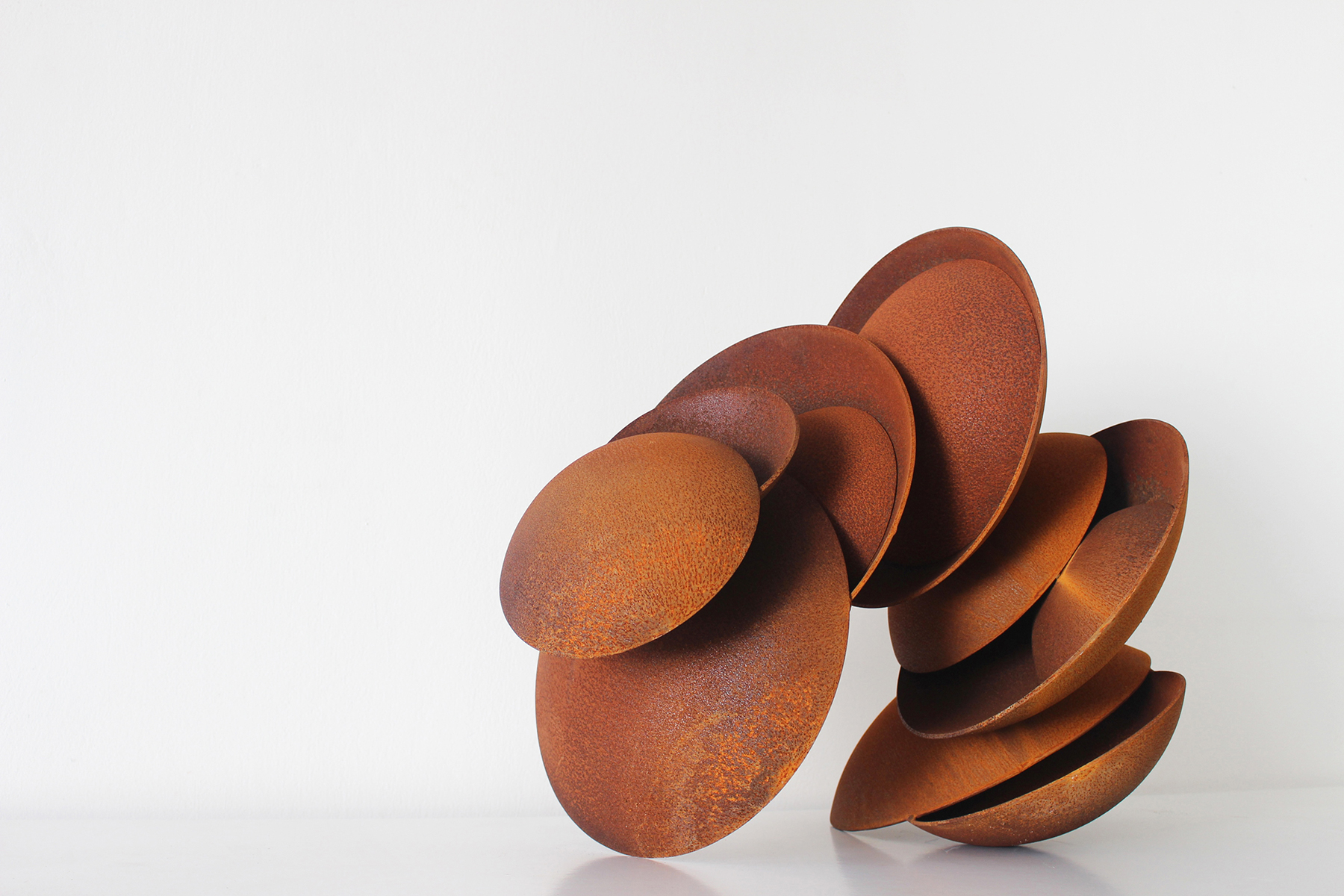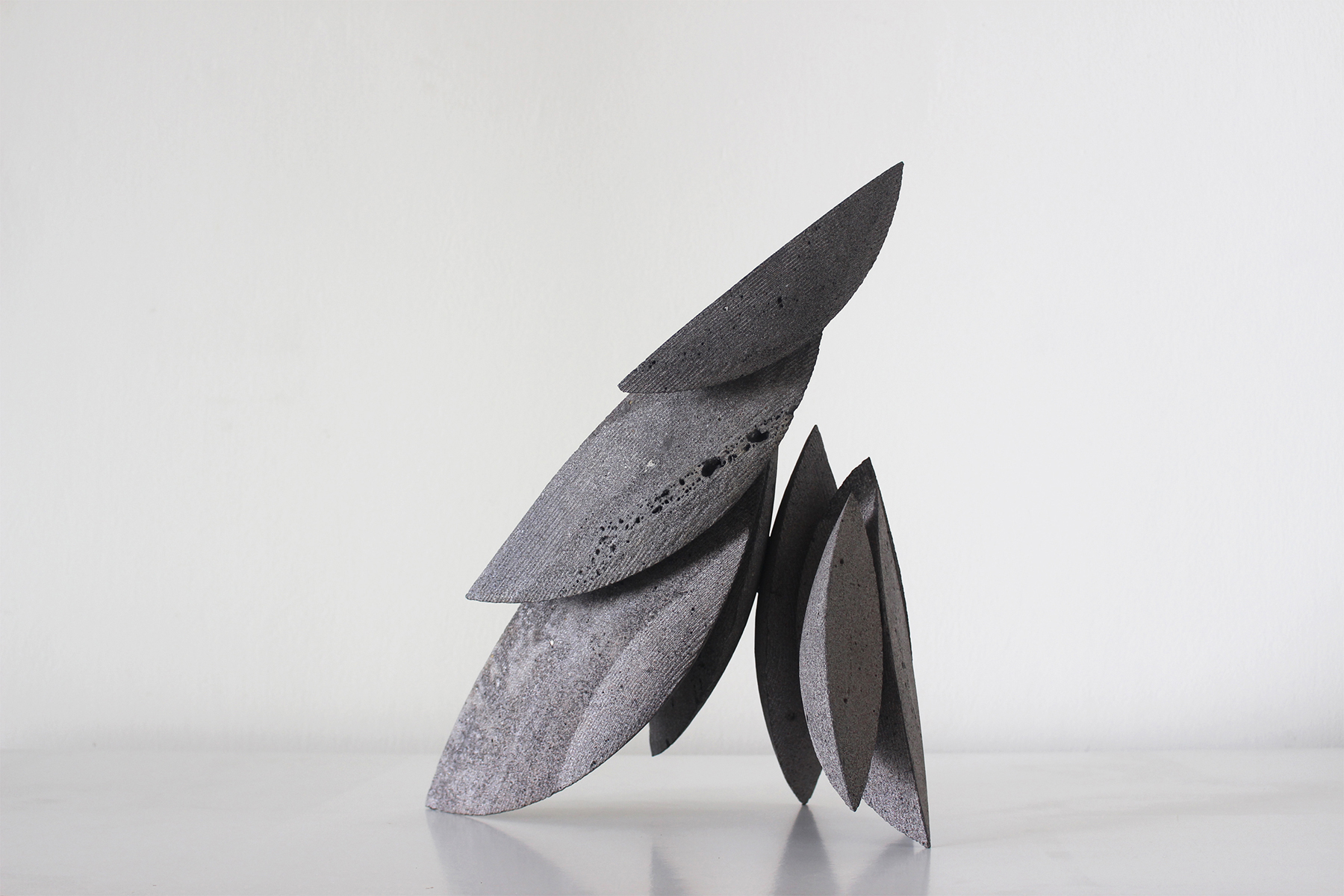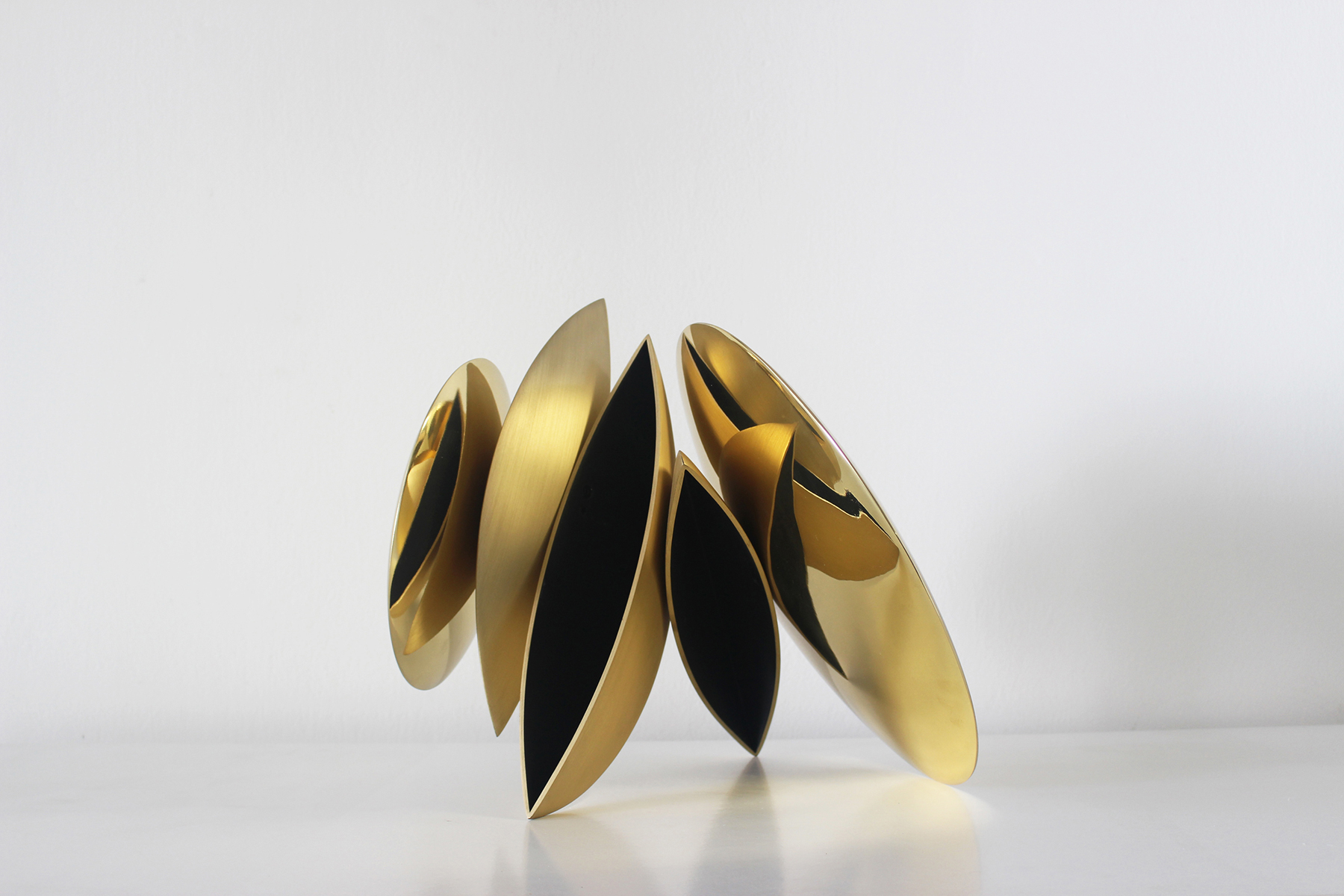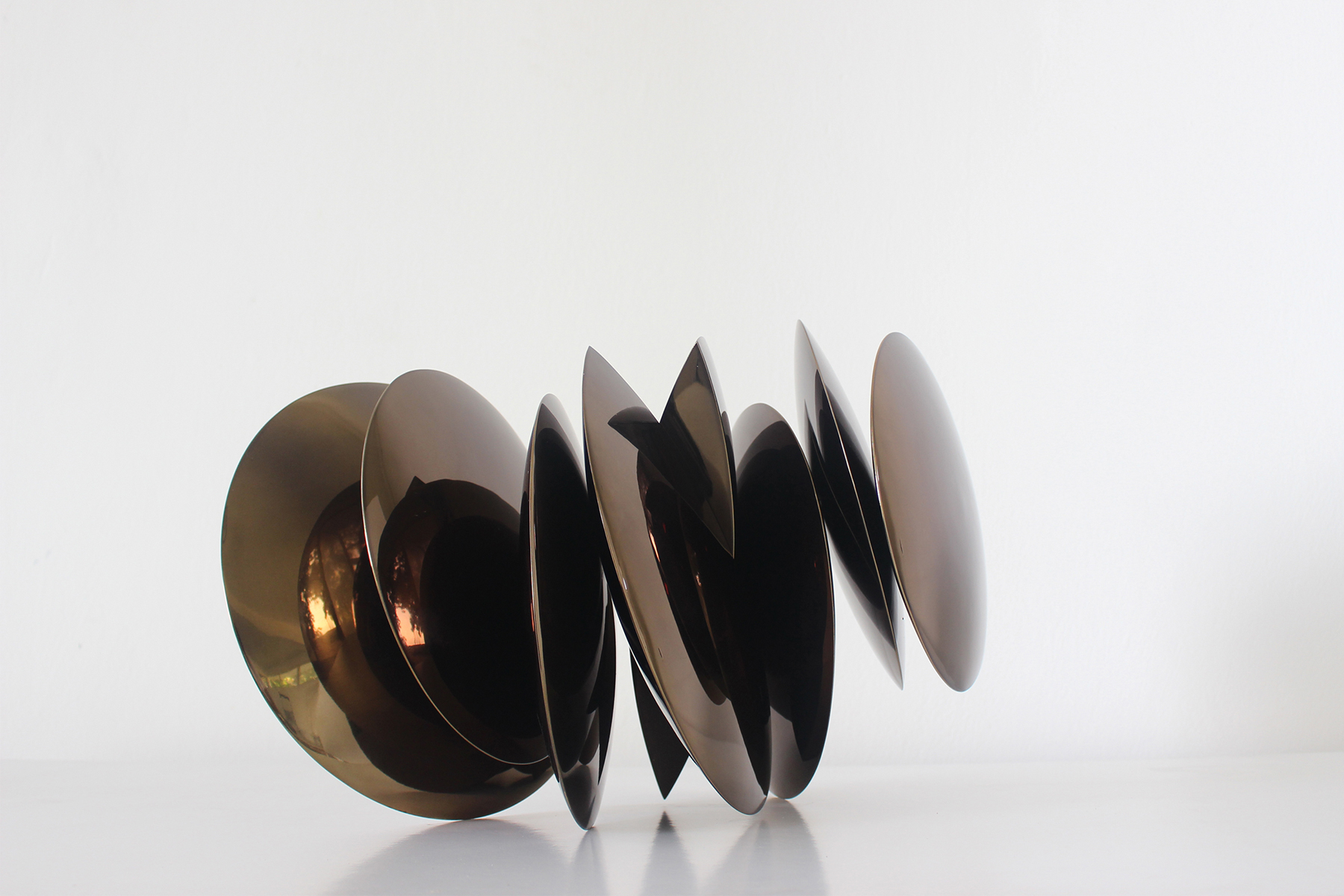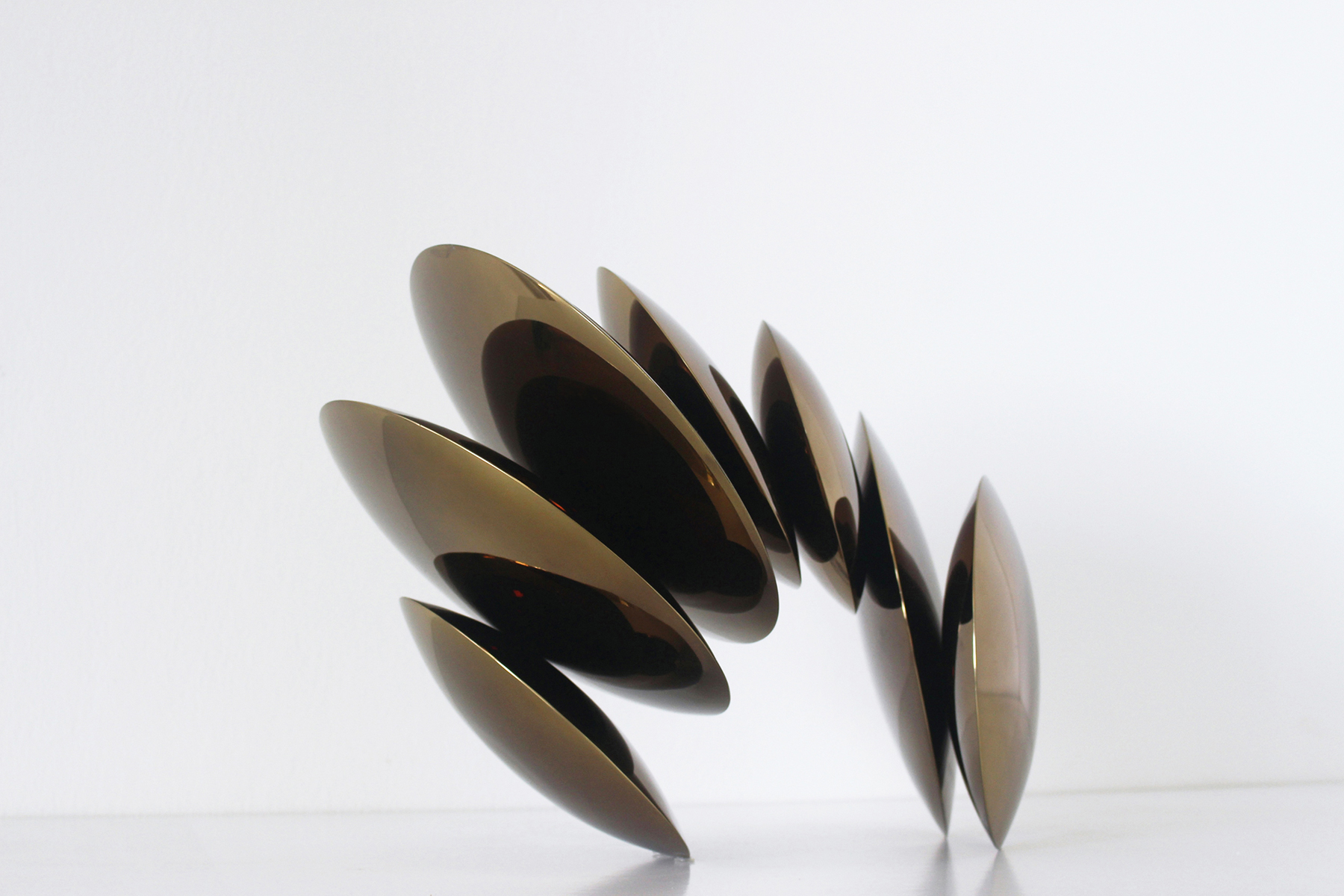Born in 1969, Lebanon. Lives and works in Rachana, Lebanon.
Anachar Basbous as a child preferred playing with magnetic boards to the regular clay modeling. In adulthood that preference for building-up rather than carving stayed with him. Nowhere is that clearer than in his latest body of work. Seemingly moving parts, almost floating in space create the illusion of constantly changing and dancing shapes. "I like to start from simple, pure shapes; a square, a rectangle, a disc or a lens..." he says " the shape is the beginning of my inspiration". Most importantly his work is driven by his fascination with, and the relationships between his sculptures and sunlight.
His works pierce space upwards, like big astral machines in a perpetual dialogue with the sun, his sculptural works becoming pure reflection, the dialogue between nature and architecture, gravity and magnetism, the macrocosm and the microcosm, the body and the spirit, between man and the Cosmos.
Anachar lives with his wife and two children in Rachana, a village of open-air sculptures overlooking the wide expanse of the Mediterranean Sea. He was born into a family of artists, his father Michel Basbous, was a renowned sculptor in his own right, and his mother a writer and poet. Anachar lived and breathed art and creativity since his birth. He made his first sculpture at the age of 10. Even his name Anachar is a play on his birthplace, forever tying him to this magical place.
Anachar finished his studies in Beirut; then continued his graduate studies in Paris at the ENSAAMA (Ecole Nationale Superieure des Arts Appliques et des Metiers d'Art) where he specialized in architectural wall design.
When he returned to Lebanon in 1992, he opened his own sculpture workshop in Rachana where he dedicated himself to stone, wood and metal sculpture, as well as mural sculptures. His works can be found across Lebanon and beyond, in public places, hotels, private residences and gardens.
In 2008, he was commissioned to design a ten meter bronze memorial to commemorate the life and death of Prime Minister Rafic Hariri on the exact spot where the latter was assassinated by an enormous car bomb in Downtown Beirut.
His sculptures appear in many private collections as well as in public places in Lebanon, France, United States, Canada, the United Arab Emirates and beyond.

